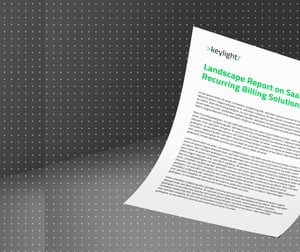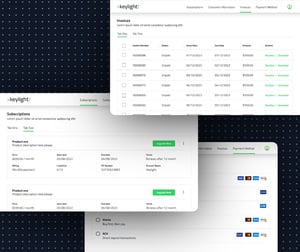Importance of strategic scaling
Why size doesn't guarantee success
We all associate the scaling of a business's size and revenue with its commercial success, but the two don’t necessarily go together. A business can be turning over enormous sums of money and actually making a loss at the same time.
Investopedia writes: "Data from the Bureau of Labor Statistics (BLS), shows that approximately 20% of new businesses fail during the first two years of being open, 45% during the first five years, and 65% during the first 10 years. Only 25% of new businesses make it to 15 years or more. These statistics haven't changed much over time, and have been fairly consistent since the 1990s."
So, what separates the businesses that achieve financial success from the ones that simply get bigger? Harvard Business Review (HBR) identified a key developmental stage in successful scale-ups, which they called 'extrapolation'. It’s where "a company explores profitable growth options while exploiting economies of scale and scope."
Understanding this concept helps scale-ups to achieve successful growth and identify the tools they need to get there.
Subscription success demands a fresh approach to strategy, operations, finance, and speed, with technology playing a pivotal role alongside the right team.
Business growth
The three critical phases
The two well known phases of business are exploration (right at the beginning) and exploitation, after the initial rush of coming to market.
 Exploration
Exploration
Exploration of your opportunities involves the search for your product-market fit, testing hypotheses about what you plan to do. Do customers really have a need that can be addressed with your product or service and are they willing to pay for that solution?
 Exploitation
Exploitation
Exploitation is a fine tuning state after the fast revenue and profit growth of the start-up stage slows down, where you strengthen your competitive advantage and strive for long-term growth and sustainability as a business.
 Extrapolation
Extrapolation
Extrapolation however is the missing link in the middle. HBR says: "During this stage start-ups pursue two goals. The first is to confirm the extent to which product-market fit shows that there is demand for the company’s offering. The second is to achieve what we call profit-market fit—to demonstrate not only that the venture can ramp up revenue rapidly but that every new customer brings in additional revenue and incurs only marginal cost—the key to profitable growth."
Value vs. scalability
Turning a valuable idea into scalable success
Establishing the value of your offering is just the first phase in business development. This is evidenced by achieving impressive growth numbers and proving that your market positioning is correct. For long-term success however, that's not enough.
Next the question of how you manage that success at scale comes firmly into play. That's a skilled, nuanced area of consideration to turn top-line growth into comparable profit growth. Broadly speaking, it's a question of economies of scale—in an ideal world, the more business you have, the more you drive down the operating costs per customer.
The pivotal feature is this: "The company must construct a business model that boosts revenue while reducing variable unit costs and containing fixed costs." This hinges significantly on the infrastructure of your business. Where a lot of organisations struggle is that their infrastructure is not really built for a scaling business—it's built only to meet the needs of the start-up.
For subscription businesses this is a particularly common problem. Often, organisations start by using systems that aren't designed for the specific needs of subscription organisations. They work well with just a few customers, but then rely on significant and increasingly complex, costly and unmanageable customisations in order to meet the long-term needs of customers and different customer groups. Over time, and as you scale, this drives costs up instead of down, thus creating a business model that does the opposite of what you want to achieve and ultimately makes a loss.
Strategic scaling
How do you scale your business successfully?
To create a business model that boosts revenue while reducing variable unit costs and containing fixed costs, you need to think differently about strategy, operations, financing and speed. This involves treating the extrapolation phase of your business development as a conscious and individual period in business development that impacts everything including organisational structure, culture, and talent, leveraging conditions that are critical to success.
Crucially, you need to:
- Be aware of the barriers or potential barriers to achieving your growth goals and find the best, sustainable and systemic solutions to overcome them, rather than looking for short-term fixes.
- Develop a problem-solving, agile mindset that enables you to simultaneously explore new ideas while exploiting your existing core business. The ability to consistently reinvent and update products to stay ahead of the game is a hallmark of highly successful individuals as well as organisations.
- Give teams autonomy whilst still ensuring they're working towards one common goal. This allows organisations to be agile and to expand through shared insights and communication, without creating disconnected processes and thinking.
- Allocating the most valuable human capital to its highest-potential opportunities within the company is essential. For example, in a subscription business this might look like the incorporation of automated processes where it's prudent, rather than tying up valuable human resources with repetitive administration or the ongoing management of system customisations that could be managed by a more appropriate system. Instead, you want that valuable input to be directed towards product development, which contributes directly to the bottom line.
- Expand opportunities by simultaneously increasing your total potential market and unlocking higher-quality revenue growth.
- Embrace inorganic growth through the leveraging of things like additional features, supporting upgrades and developing profitable partnerships. Again, the groundwork for this is laid in the infrastructure of your organisation. For example, having a powerful partnership portal to manage those relationships.
Leveraging technology
How your tech stack can help you scale
Your tech stack is arguably the silent hero for helping you to achieve all these aspects of a sustainable and scalable subscription business. Yes, you need a great value proposition, but the right business platform can help you turn that into long-term, profitable success in two essential ways:
-
It provides you with the tools to put your vision into action without logistical barriers.
-
It allows you to measure the results of your actions so that you can course-correct and continue developing your approaches for cumulatively better outcomes.
For subscription businesses, choosing the right tech stack is crucial because to operate at its best you need all the elements to operate independently but to also be connected end-to-end. Yes, it's a function of the business but it's also the foundation on which it is built. Therefore, in an ideal world, you don't need individual functions, you need a complete business platform that's designed for subscription organisations.
Choosing the right thing can seem like a daunting prospect when you're switching from your current processes or planning for scale-up success right at the start of your venture. However, there are some key things to look for to make your decision easy:
 Automation
Automation
Look for a platform that easily enables automation to reduce your manual overhead, allowing you to allocate valuable human talent to the most beneficial parts of the business to facilitate profitability and growth. This will also help to mitigate errors in key areas such as billing and invoicing.
Establish business processes
Look for a platform where you can establish as well as automate business processes across channels as well as develop custom logic and conditions, which will help to create unity across growing teams. For example, you want to be able to implement clear onboarding processes both for team members and new customers.
Customer and user experience
The right platform can ensure customer journeys are seamlessly connected to your business and that internal efficiencies save costs, creating a sense of maturity that reassures and engages both customer and internal teams.
Speed
Look for a platform that has all these elements in place and more, allowing you to act quickly, whether it's customising a customer subscription or launching a new product or strategy. This will allow you to explore new opportunities and stay ahead of the market, growing your team and your customer base simultaneously.
Dedicated subscription platform
Introducing a dedicated
subscription business engine
Lots of subscription businesses make the mistake of trying to bring lots of isolated platforms together alongside a generic business system in order to achieve all the capabilities they need. However, the best way to think strategically about the long-term success of your organisation is to use a dedicated subscription business engine.
Having a dedicated subscription platform is a strategic decision that requires millions of connected operational details to be taken into consideration in the software. It's not just a billing system; it's a business system. A dedicated subscription business platform will give you everything you need to scale and run your business all in one place, with a single point of contact and, crucially, a team that seeks to work in partnership with you.
This not only has the benefit of helping you to deliver better, more informed products that are designed as you intend (rather than inhibited by the platform), but it can also prevent the accumulation of unnecessary costs. Crucially, it enables your teams to stay focused on their goals (such as selling with easy access to an easy-to-navigate product catalogue) rather than spending their time manually customising external systems and processes.
About keylight
The right solution for scaling businesses
keylight has been designed specifically with subscription businesses in mind. Configurability, logic and a modern technical foundation make it the most powerful subscription business system on the market, equipped with everything you need to launch as well as the flexibility for new and established businesses to scale at pace and without barriers.
From a capabilities perspective, keylight offers a wealth of functionality, allowing you to streamline and experiment in everything from the customer journey to monetization models, billing and accounting workflows.
From a cost perspective, keylight gives you clarity - there are no hidden costs—we are 100% clear about what's included, what you can do and how. That clarity means you can plan your budgets and your business development knowing there won't be any surprises or inhibitors along the way.
In short, keylight gives subscription businesses a solid and flexible technology foundation that helps scale-ups stay ahead of the curve and competitors, retaining a clear and manageable focus on sustainable, profitable growth.

Power your business
with the right subscription solutions
![]() Book a free consultation
Book a free consultation
Power your business
with the right subscription solutions
![]() Book a free consultation
Book a free consultation

Explore keylight's superior value compared to conventional subscription platforms
![]() Compare now
Compare now
Explore keylight's superior value compared to conventional subscription platforms
![]() Compare now
Compare now




